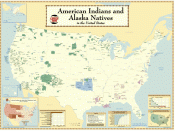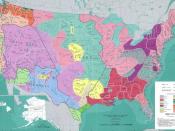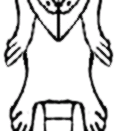US/Canadian Native Americans and Their Identities
What is Native American? Does it mean that one is descended from the indigenous people who once lived 'peacefully' in North American before the Europeans invaded? Is this all that being a Native American means? As a 'minority�,' there is far more for a Native American to search for than just their roots. As a people who vary sub categorically within the term 'Native American,' there is much more than just one's own personal family history to cause one to feel displaced and lost and therefore give reason to search.
Native American identities can be defined by how indigenous peoples are viewed and how they view themselves. Few people know much about Native Americans crossing the United States/Canadian border. Some Native Americans lose their national identity because they feel they are from neither Canada nor United States; thus causing them to lose the meaning of their name: Native and American.
Native American Identities
In the book In Search of April Raintree by Beatrice Culleton Mosionier, there are many examples of 'troubled identities.' Through not only common Native American misinterpretations, but also a display of foster care, there is much for the main characters to search for when trying to find a sense of self.
The main characters, April and her sister Cheryl Raintree, were Metis, people of mixed Native American and French-Canadian ancestry. Because of this, people had preconceived notions about the girls. The people in their community, and even a foster home they were placed in, made cruel remarks and treated them as if they were a lesser people because of their race.
The girls' parents were alcoholics and had some of the stereotypically 'Native qualities,' those that are commonly thought of as 'Native American,' so the same stereotypes were placed upon the...


